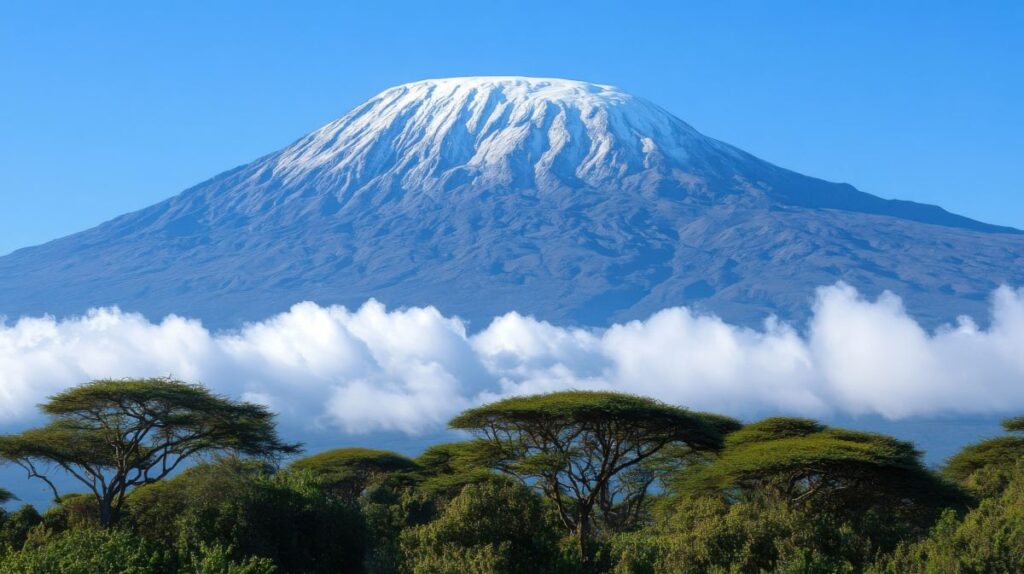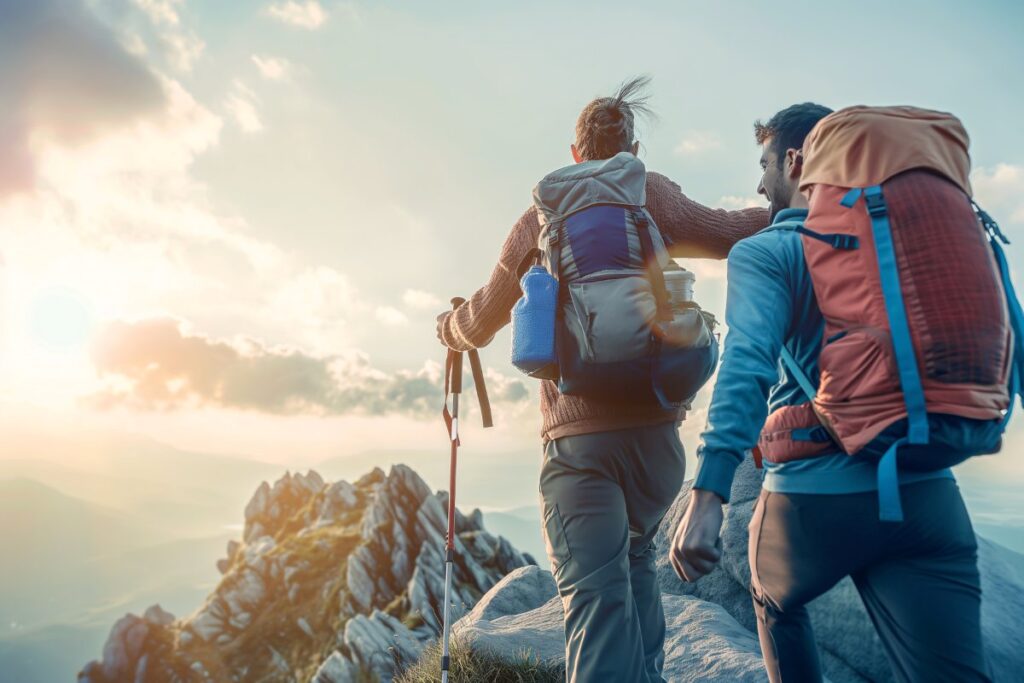
Mount Kilimanjaro is one of those names that gets whispered with a mix of awe and curiosity. People imagine snow on the roof of Africa, long trails through the clouds, and that triumphant photo at Uhuru Peak with the sun rising behind you. But here’s the thing – before you can dream about the view from the top, you’ve got to ask the real question: how hard is it to climb Kilimanjaro? And the answer depends on who’s asking, and how honest they’re being.
It’s Not a Technical Climb – But Don’t Let That Fool You
Kilimanjaro is often described as a “walkable” mountain. You don’t need ropes, crampons, or mountaineering experience, which lures thousands of people every year into thinking it’s easy. It’s not. It’s accessible, not easy. The challenge isn’t about rock climbing or technical skill – it’s about endurance, altitude, and the psychological grind of walking uphill for days on end in freezing, thinning air. You’ll be hiking anywhere between five and nine days, covering up to 60–70 kilometres total. That sounds manageable until you factor in the altitude, the lack of sleep, and the cold creeping in when you least expect it.
The Real Enemy: Altitude
If Kilimanjaro has a villain, it’s altitude sickness. No matter how fit you are, it can hit you. Around half of all climbers experience at least mild symptoms – headaches, nausea, loss of appetite, dizziness. And roughly one in ten are forced to turn back before the summit because their body simply won’t adjust. It’s not about willpower. You can’t “tough out” altitude. The only way to reduce the risk is to ascend slowly, hydrate constantly, and choose a route with proper acclimatisation days built in.
When you reach 4,000 metres, the air holds about 60% of the oxygen found at sea level. At the summit – 5,895 metres – it’s closer to 50%. Your heart rate increases, your breathing quickens, and simple movements start to feel like a full-body workout. You’ll find yourself pausing every few steps near the top, not because your legs can’t handle it, but because your lungs can’t.
Physical Fitness: How Fit Do You Need To Be?
There’s no single “ideal” fitness level for Kilimanjaro. You don’t have to be an athlete, but you do need a decent base of cardiovascular endurance and leg strength. You’ll be walking for 6–8 hours a day, often uphill, often with a backpack. The terrain varies – from slippery rainforest mud to volcanic scree that slides back half a step for every one you take.
If you’re already active (say, you go to the gym, hike at weekends, or cycle regularly), you’ll probably adapt fine. If not, start preparing a few months in advance. Long-distance walks, stair climbs, and hill hikes with a weighted pack are the best ways to simulate the climb. The fitter you are, the more energy you’ll have left to handle the altitude – which is the real leveller up there.
Route Choice Makes a Huge Difference
Not all Kilimanjaro routes are created equal. Some are short and direct, others are long and gentle. The route you choose will massively affect how difficult your climb feels.
- Marangu Route (5–6 days): Often chosen for its huts instead of tents, but the quick ascent leaves little time to acclimatise. Lower success rate.
- Machame Route (6–7 days): Steeper in places but offers better acclimatisation. The views are spectacular, and it’s one of the most popular.
- Lemosho Route (7–8 days): Longer, quieter, scenic, and with a high summit success rate.
- Northern Circuit (8–9 days): The longest route and, interestingly, one of the easiest physically because it gives you so much time to adjust.
If you’re serious about reaching Uhuru Peak, go for one of the longer routes. They’re tougher in terms of endurance, yes, but easier on your body in terms of altitude.
And for a deeper dive into the various trekking routes to Uhuru Peak, we’ve outlined every option in detail – including what makes each one unique.
The Summit Night: Where It Gets Brutal
No point sugar-coating this part – summit night is rough. You’ll wake around 11 p.m. or midnight, put on every layer of clothing you own, and begin the final ascent by headlamp in sub-zero temperatures. The air feels thin and sharp, your water bottles freeze, and every breath sounds louder in the dark. The climb to the summit ridge usually takes 6 to 8 hours, depending on your pace and how well you’ve acclimatised.
Most climbers describe it as a mental battle more than a physical one. You’re exhausted, nauseous, and it’s pitch black – but when dawn starts to bleed over the horizon, and you see that first sliver of gold light over Africa, everything suddenly feels worth it. You’ll probably cry, or laugh, or just stand there completely still, overwhelmed. It’s that kind of experience.
Mental Grit: The Hidden Challenge

People underestimate the mental side of climbing Kilimanjaro. It’s not about charging up the mountain – it’s about enduring discomfort without letting it break your focus. You’ll be cold, dirty, tired, and maybe slightly miserable. But you’ll also witness landscapes so vast they feel unearthly, and a sense of community with your guides and team that’s hard to describe.
The best climbers aren’t necessarily the strongest – they’re the ones who can keep a calm, steady mindset. Altitude doesn’t respond well to ego. It rewards patience and humility.
Equipment and Preparation
You don’t need specialised mountaineering gear, but quality matters. Waterproof boots, a good sleeping bag rated for -10°C, layered clothing, and trekking poles make an enormous difference. Also, be honest about your limits – pack light, take your time, and listen to your guides. They know what they’re doing. Most have summited hundreds of times and can tell when someone’s struggling before the person admits it.
And please, train with your gear before you go. Blisters at 4,000 metres are a kind of hell you don’t want to discover firsthand.
Weather: Another Factor You Can’t Control
The best climbing seasons are January to March and June to October. Outside those windows, rain can make trails slippery and miserable. Temperatures can range from 25°C at the base to -15°C at the summit. It’s a mountain of extremes – sunburn and frostbite in the same day, sometimes within hours.
How Hard Is It, Really?
If we had to summarise it: moderate to hard. Physically, it’s like doing seven back-to-back hiking marathons at altitude. Mentally, it’s about endurance and composure. But technically? Simple. If you can put one foot in front of the other, you can do it – provided you respect the mountain and give yourself enough time to adapt.
About 65–75% of climbers reach the summit overall. That figure jumps to 90%+ on the longer, slower routes. Which tells you everything you need to know: pace yourself, plan smart, and don’t underestimate the altitude.
The Reward
Reaching Uhuru Peak isn’t just ticking off a bucket-list item – it’s standing on the highest point in Africa, looking down at the curvature of the Earth, and realising you’ve done something few ever will. You’ll come back changed. Maybe humbled, maybe proud, maybe both. But you’ll understand why people keep calling it life-changing.
And if you’re fascinated by Kilimanjaro climbing achievements, check out our feature on The First Person to Climb Mount Kilimanjaro – a story that shows just how long humans have been drawn to climbing Africa’s tallest peak.

